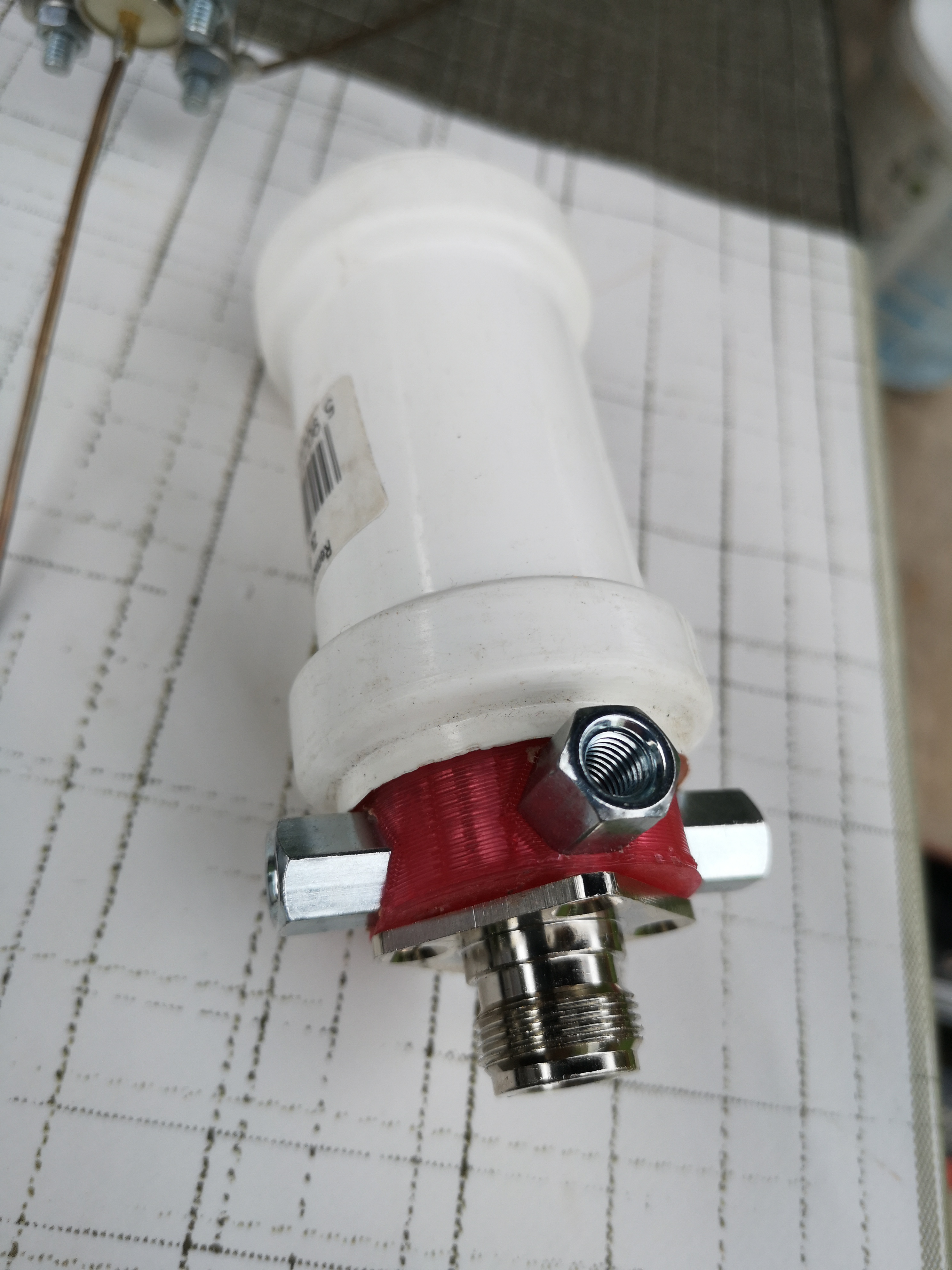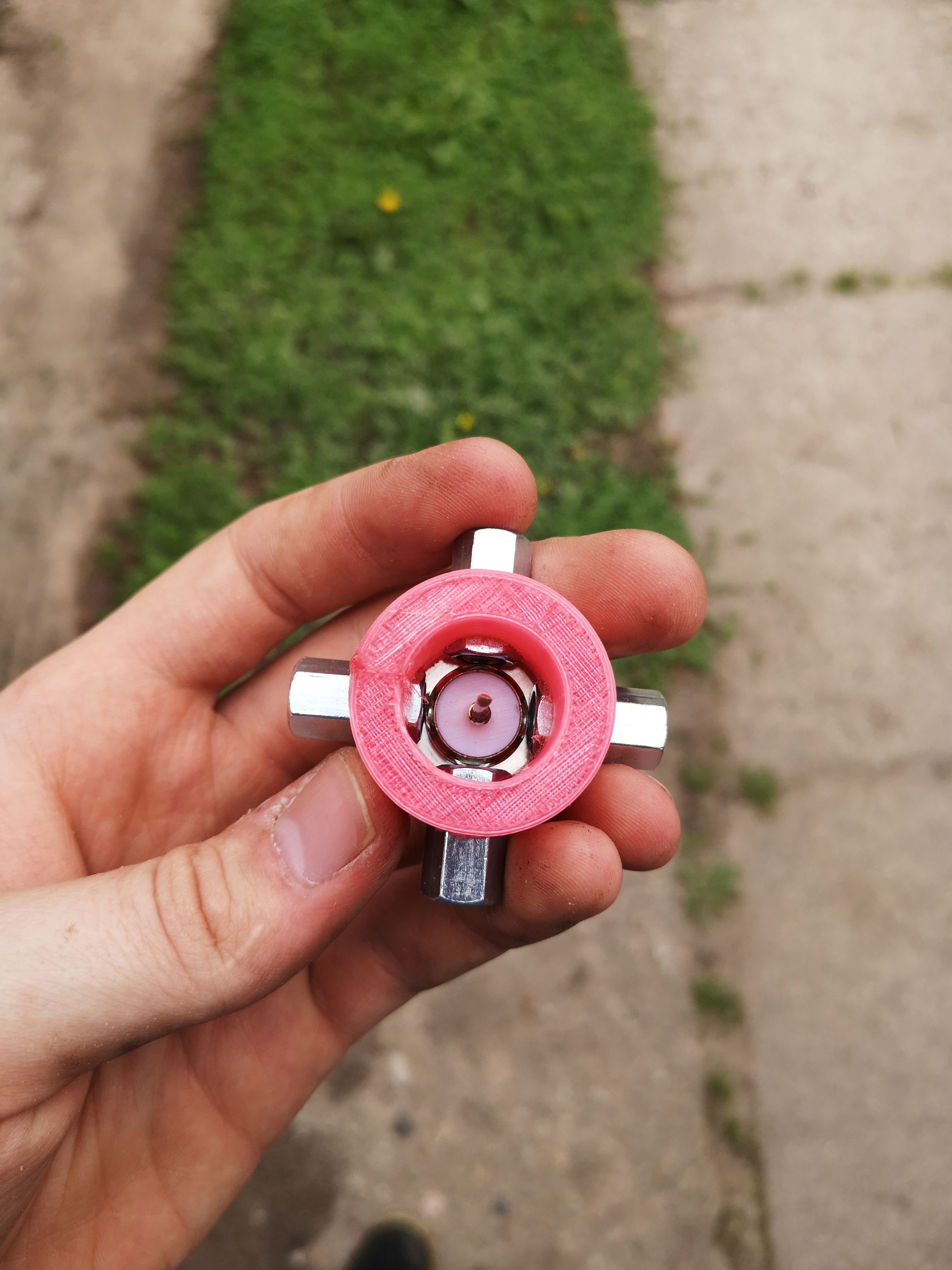Interesting documentatation. This ceramic antenna is very directional. The 3D-radiation model shows big holes in the direction of the short (solder) sides. I guess it needs carefull designing, testing and mounting of/on the PCB. Best orientation seems to be vertical or mount the PCB vertical.
how do you connect the radials to ground… that’s not visible/clear to me ?
Sorry, didn’t show that. There is screws from n type to large m6 nuts. That’s how connecion is made. And in the same time n-type holed in place
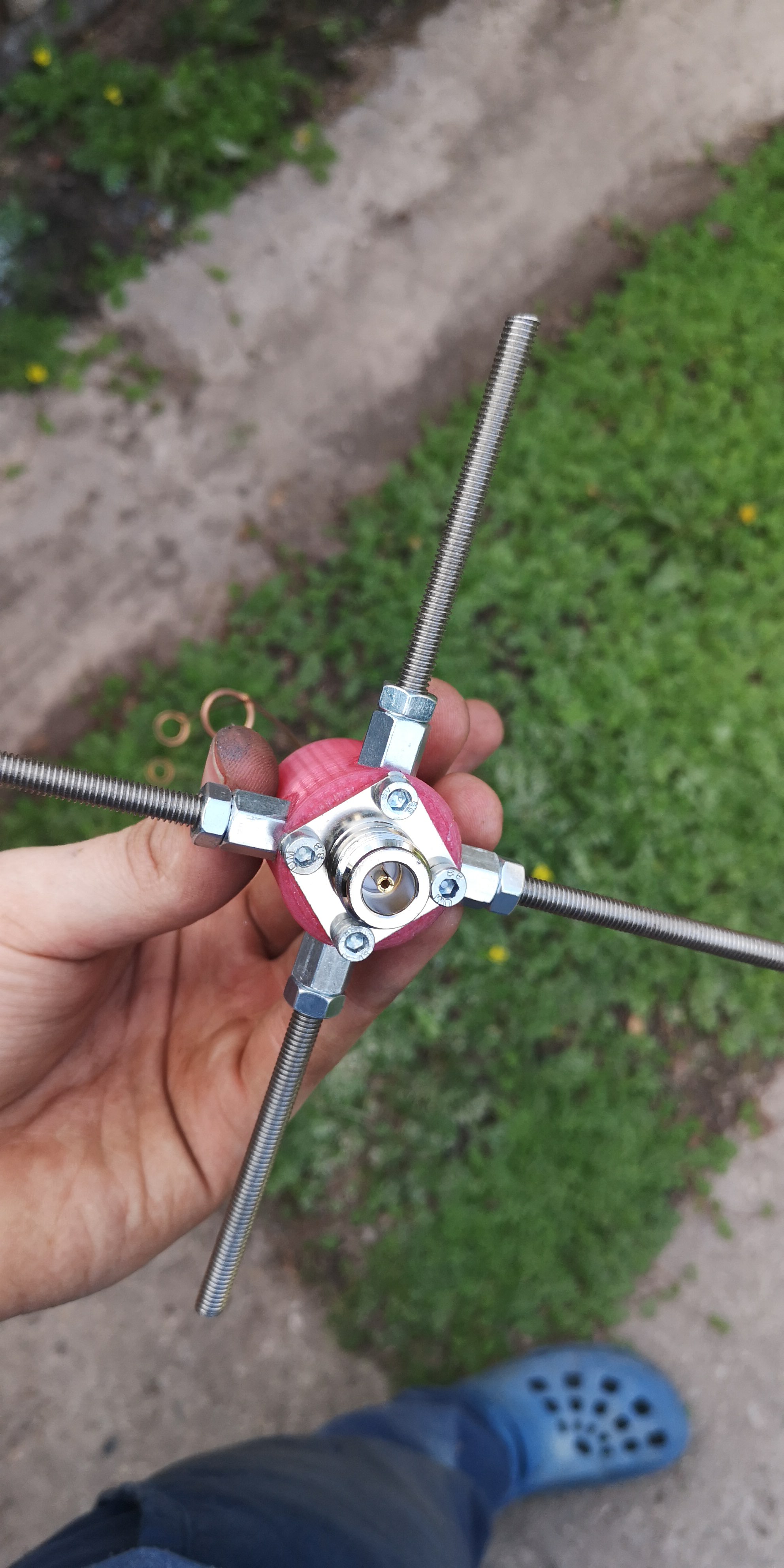
ah ok tnx…  clever construction
clever construction
- but do you have to ‘bend’ these radials or not ?
Honestly don’t know. I have collinear antenna on my roof from maker in Czech and it has straight ones. So I went with straight also. On last field test we manged to get 12km with this one. 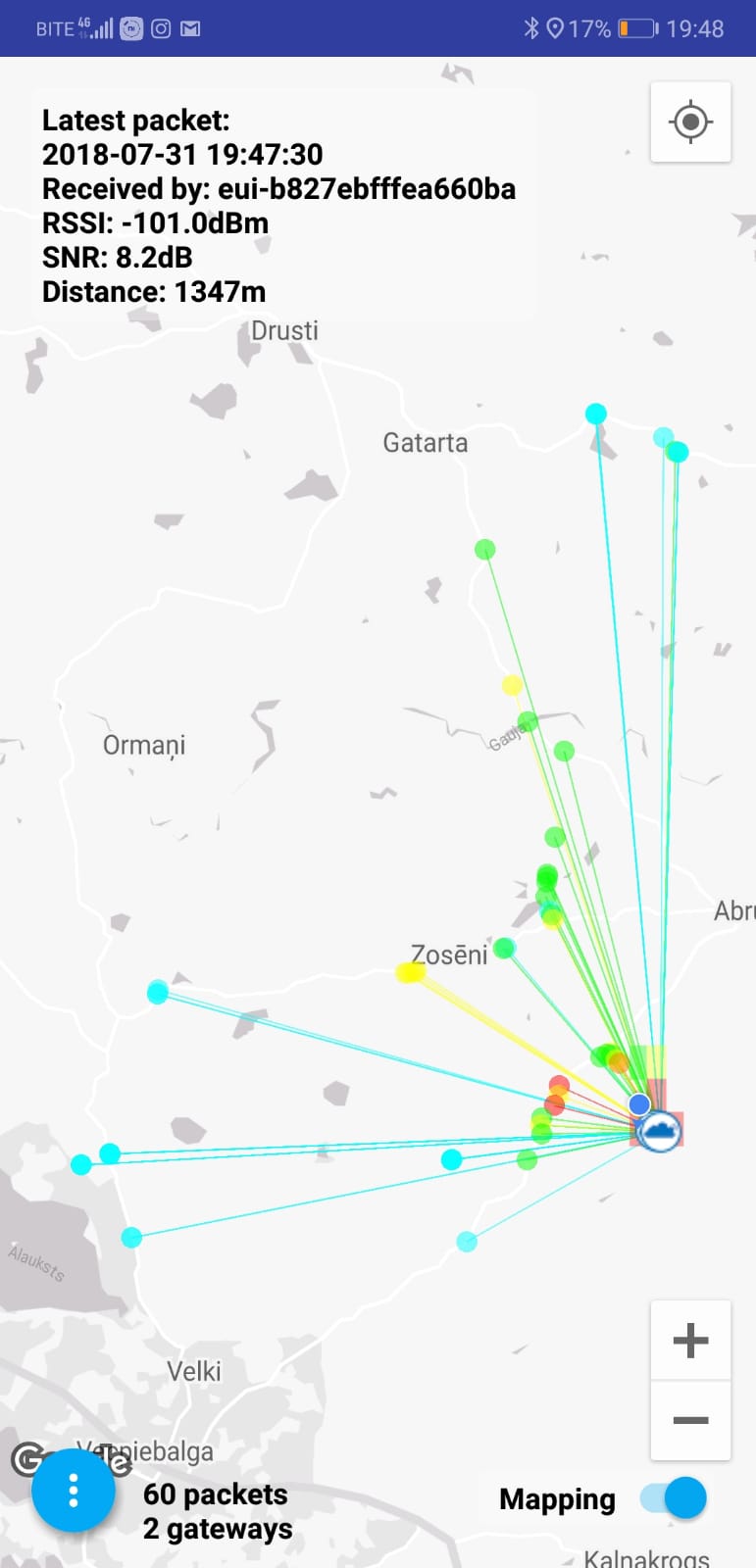
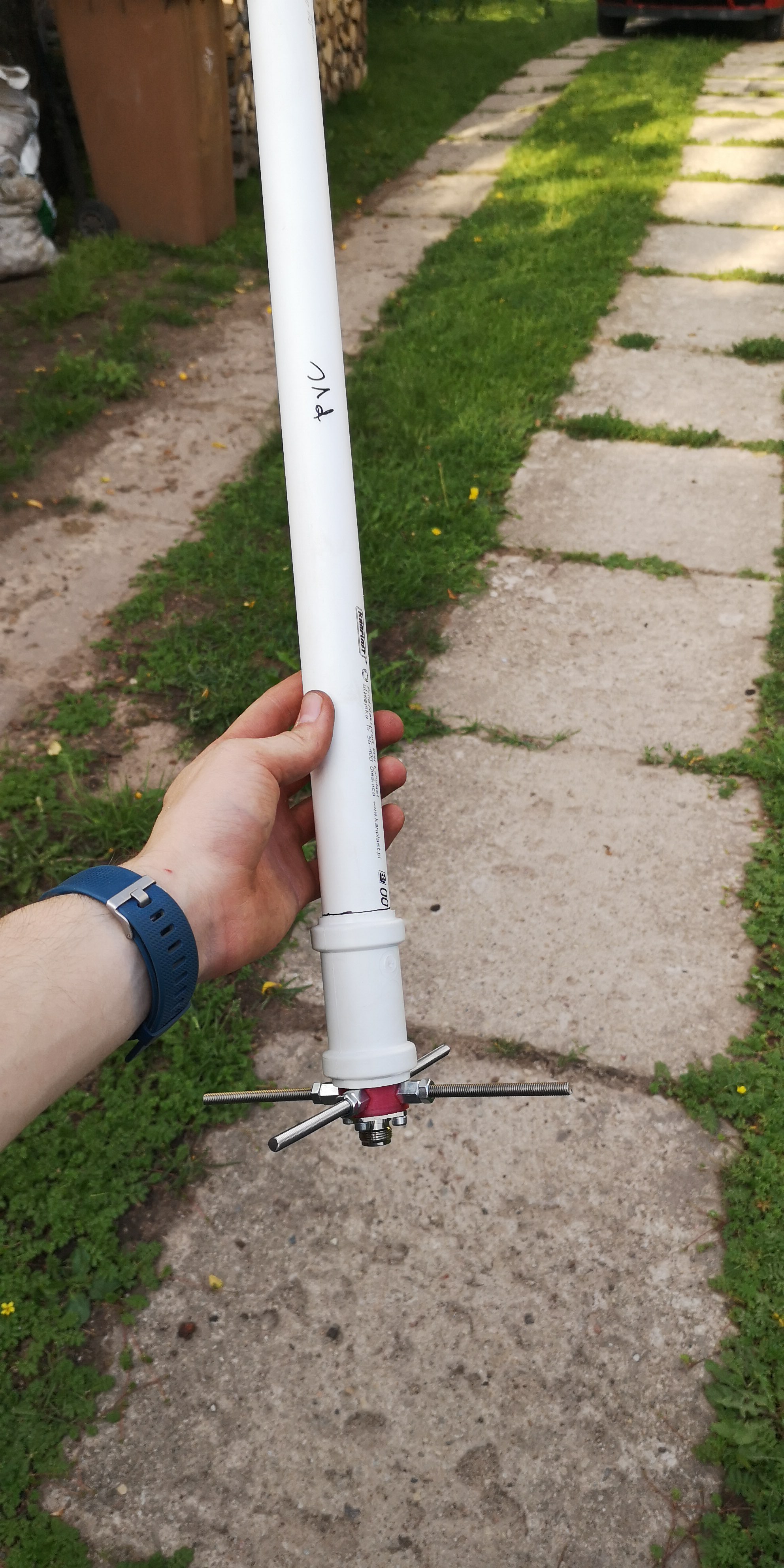
well… it seems to work very well … So don’t change anything 
I would love to measure swr and see Smith graph, but sadly I don’t have any of needed equipment. I can bet, that it is possible to tune it more.
@jenertsA, what are you using as the antenna’s colinear element? Since you don’t have test equipment, have you run a comparison test against something like a 1/4 wave monopole. Even a monopole element soldered to the same N socket
If you build a reference antenna, such as a 1/4 wave vertical with radials, you can test that and compare the gain performance with another antenna, the only ‘test’ equipment you need is one LoRa device as a transmitter and another used as an RSSI meter.
It is the same collinear from ttn lab story
I hade chance to once use vna, to see how this antenna and enclosure performers - same setup without 3D printed parts. That’s how I know that is works quite well SWR was < 1.7 Still upgrade probobly changet smehing/a lot. Thats why I am saying that it could use some tuning tuning
yes, this could give some insight to this antennas gain
Ths is a idea, might do it in some more free time. ![]()
@jenertsA, if you get a chance to perform some tests, would be interested to see a comparison with and without radials as the labstory does not have them.
Its really the other way around.
A fancy antenna gizmo (I have one) will give you some insight into how well the antenna might perform in reality, in that it will tell you the SWR etc at the chosen frequency.
However you can build an antenna that looks just great on the fancy antenna gizmo but performs quite badly in reality. I have seen this happen several times.
When you want to have a perfect VSWR and match, these ultra small antenna’s are the beste you can have : https://www.banggood.com/nl/2-PCS-SMA-Male-RF-Coaxial-Termination-Matched-Dummy-Load-50-Ohm-Connector-p-1193798.html 
But indeed you need a good match to have the maximum power transfer from the transmitter to the antenna and a good radiation of that power.
For the matching I use my RigExpert for the matching and field tests for the radiation (like I have done some years ago : http://www.ph2lb.nl/blog/index.php?page=lora-measuring-antennas )
Typical LoRa modules do not always have an exact 50R output impedance, that is surely no surprise and they are not ‘trimmed’ in manufacture and there are the inevitable vartiations due to component tolerances.
Unfortunatly if you want a ‘perfect VWSR and match’ you need to tune the antenna for an individual module. Granted that is impractical in most cases, but if you want to maximise performance its whats needed. And you can only do it with the RSSI approach.
After many beautiful antennas, let me go back to the ground 
I just started playing with LoRa, with a RPi + Dragino hat gateway and a Arduino MKR WAN 1300 as node. Almost zero knowledge of electronics.
Since I did not reach useful distances, after having read some of this thread I tried a simple 1/4 lambda antenna (in the middle in the picture: a paperclip straightened and cut at 8,6cm, inserted in the SMA hole). I found a consistenly better RSSI in the same locations (meters from the gateway, about -70 vs. -90 db).
Then I adapted a WiFi antenna by removing the external conductor up to 8.6cm (bottom one), with slightly but inconsistently better results. They seem to depend on how is bent - 8.6 is in part inside the mobile part.
Anyway, the questions are: which kind is the the original antenna (top one in the picture), and shall I really expect so much difference vs a 1/4 lambda or there is some bad connection?
Thanks.
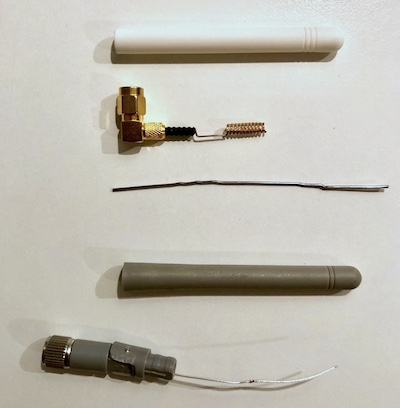
I don’t really understand my antenna. And it seems to be wrong for 868Mhz.
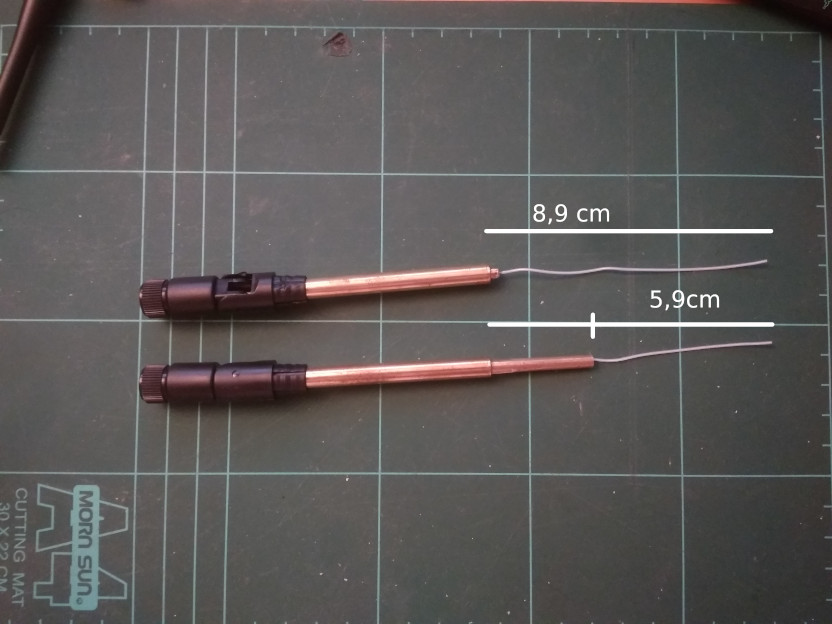
So I better ask here. If the copper brass at the bottom seems to be called balum(?), it is 7,5-7,7cm Measured from the hole where the antenna can be bended. But it doesn’t make sense because it should be 8.635 (1/4 wave).
Next, the smal piece of copper that is placed after (that is removable). Length is 3,4cm aprox.
And then the wire, that’s 8,9cm while quarter wave is again 8.3cm.
So questions is:
- Whats this antenna for? I bought for LoRA 868 but doesn’t seem to match.
- What’s the small piece of copper (3,4cm one). Is placed there to reduce the size of the wire, while enlarging the size of balum?
- The size of balum is relevant? I thought it was placed for grounding.
I get 500m with this and a pigtail antena on gateway. That’s bad. Will I get better distance if I adjust the antenna? How?
And a question that it seems nobody does. What’s the best performing antenna so far?
Thank you a lot!
This is not meant to be a flippant answer, but good placement of an antenna makes far more of a difference than choice of antenna.
Some antennae that you can buy enable you to mount the antenna outside (wind, rain proof). You could consider them to be better, but the antenna itself is not really much better, it is just better positioned.
Having said that, taking the concept of better to be “cheaper”, these perform well for me (they work better if you adapt them - soldering a bit more length and checking with antenna analyser )
YMMV - but they are cheap - buy 4 of them and give them a try? - just make sure you are getting an antenna which has the correct connection (male pin or female hole) that suits your gateway. For a node, it may not matter because you can use the SMA wire
